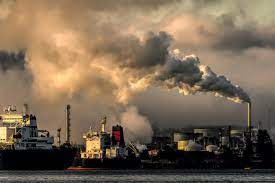A thermodynamic and physicochemical framework for lunar ice mining by induced sublimation
- Get link
- X
- Other Apps
Meaning
A thermodynamic and physicochemical framework for lunar ice mining by induced sublimation refers to a scientific model that explains how heat energy can be applied to lunar subsurface ice deposits to convert solid ice directly into vapor, which can then be captured and condensed into usable water. It integrates thermodynamics (energy transfer and heat balance) with physicochemical principles (phase change, material behavior, and chemical composition) to optimize water extraction in the Moon’s harsh environment.
Introduction
Water ice found in permanently shadowed regions (PSRs) of the Moon is crucial for future lunar habitation and resource utilization. Extracting this ice through induced sublimation—using controlled heat sources such as microwaves, lasers, or focused solar energy—presents a promising in-situ resource utilization (ISRU) strategy. Developing a thermodynamic and physicochemical framework allows scientists and engineers to predict ice behavior under vacuum conditions, optimize energy input, and enhance extraction efficiency while minimizing material loss or contamination.
Advantages
-
Sustainable resource utilization: Enables long-term lunar missions by providing in-situ water, oxygen, and hydrogen.
-
Energy efficiency: Induced sublimation uses targeted heat application, reducing waste and avoiding mechanical excavation.
-
Environmental adaptability: Works efficiently under low-pressure, cryogenic lunar conditions.
-
Reduced mechanical wear: Non-contact methods minimize dust interference and equipment degradation.
-
Scalability: Suitable for both small robotic missions and large industrial operations.
Challenges
-
Thermal management: Controlling heat propagation in regolith to avoid rapid vapor loss.
-
Material complexity: Lunar soil’s porosity, grain size, and mineral composition affect sublimation dynamics.
-
Energy limitations: High energy demand for maintaining sublimation under extreme cold.
-
Capture efficiency: Preventing recondensation or loss of vapor in vacuum.
-
System durability: Long-term operation in radiation and micrometeoroid exposure.
In-Depth Analysis
The framework relies on balancing energy input (Qin) with latent heat of sublimation (Ls) and conductive losses to surrounding regolith. The heat transfer model includes both radiative and conductive terms, governed by Fourier’s and Stefan–Boltzmann laws. The physicochemical interactions involve phase transitions of H₂O molecules under pressures <10⁻³ Pa, where sublimation dominates over melting. Computational models simulate heat flow, vapor diffusion, and mass flux within regolith pores. Experimentally, microwave and laser heating methods have demonstrated localized sublimation, where vapor transport can be captured through cold traps or cryogenic condensers. Optimizing wavelength, power density, and beam penetration depth is crucial for efficiency. The framework further integrates kinetics of vapor diffusion and thermophysical properties—such as thermal conductivity, specific heat, and porosity—to determine extraction yield per unit energy.
Conclusion
The thermodynamic and physicochemical framework for lunar ice mining by induced sublimation provides the scientific foundation to design efficient, reliable, and scalable extraction systems. By uniting theoretical modeling with experimental validation, this approach paves the way for autonomous water recovery, supporting lunar bases and future interplanetary missions.n
Summary
This framework combines thermodynamics and physicochemical modeling to enable efficient lunar ice mining through induced sublimation. It analyzes heat transfer, vapor transport, and regolith interactions to optimize energy use and recovery rates. Despite challenges in thermal control and vapor capture, it offers a promising pathway for sustainable water extraction, critical to establishing a permanent human presence on the Moon.
- Get link
- X
- Other Apps





Comments
Post a Comment